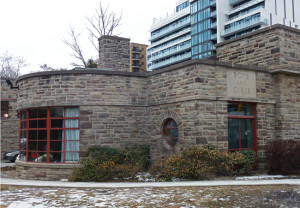The Library Book
As a child, I went regularly to the George H. Locke Public Library, on the southeast corner of Yonge Street and Lawrence Avenue in Toronto, usually with my mother. Years later, my mother told me that it was the place I most loved to go. (And not only because it involved a stop on the way home at Hall’s Dairy for an ice cream cone.) When we arrived, she once told me, I ran directly to the room with the big, curved window, where the children’s books were kept. I have a memory of the George Locke Library being big and grand, like a church but better. I also remember looking at the names and stamped dates on the cards that sat in pockets in the backs of library books. Although my parents bought me many books — I had a shelf of them in my room when I was a toddler — on those visits to the library I would have been seeking out Enid Blyton’s Noddy series and Thornton W. Burgess’ Old Mother West Wind series of nature stories (which at first my parents and older sister read to me) and so many picture books I can’t remember them. A few years later, it would have been Walter R. Brooks’ Freddy the Pig series, and after that The Hardy Boys and Dale of the Mounted.
The Locke Library, which opened in 1949, was named after George Herbert Locke, the second chief librarian of the Toronto Public Library system and responsible for a major expansion of the branches. The Locke was my childhood library, but throughout my life libraries of every kind have been like sanctuaries to me. I was always in my high school library and spent hours in the libraries at York University and Ryerson as I worked my way through an eventual undergraduate degree. I visited them when I traveled (there was an especially lovely one in Owen Sound, I remember) and, as a young freelance journalist in the pre-Internet era, I knew the Metro Reference Library like the back of my hand.
 Right now I’m reading Susan Orlean’s wonderful The Library Book. Although it tells the story of a raging fire in 1986 that destroyed more than a million books in the Los Angeles Public Library, it’s really a book about the romantic, essential nature of libraries to our culture.
Right now I’m reading Susan Orlean’s wonderful The Library Book. Although it tells the story of a raging fire in 1986 that destroyed more than a million books in the Los Angeles Public Library, it’s really a book about the romantic, essential nature of libraries to our culture.
There is an evocative passage describing the day Orlean first walked into the LAPL, shortly after moving to Los Angeles with her husband and child. “Nothing had changed — there was the same soft tsk-tsk-tsk of pencil on paper, and the muffled murmuring from patrons at the tables in the center of the room, and the creak and groan of book carts, and the occasional papery clunk of a book dropped on a desk. The scarred wooden checkout counters, and the librarians’ desks, as big as boats, and the bulletin board with its fluttering, raggedy notices were all the same. The sense of gentle, steady busyness, like water on a rolling boil, was just the same. The books on the shelves, with some subtractions and additions, were certainly the same.”
Sadly, Orlean assumed her mother would love this project more than any other in her daughter’s distinguished journalistic career, given their shared love of libraries, which Orlean at one point describes as being about “the persistence of memory.” But before she’d finished the book she was losing her mother to dementia.

